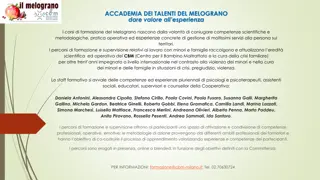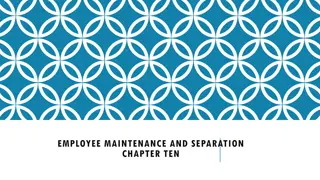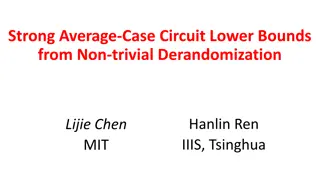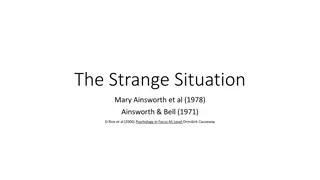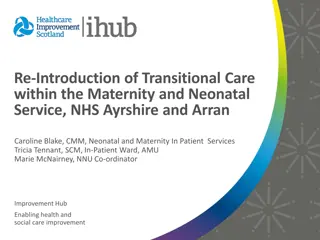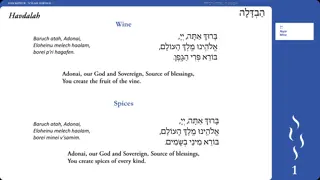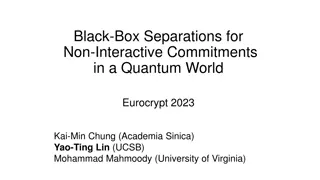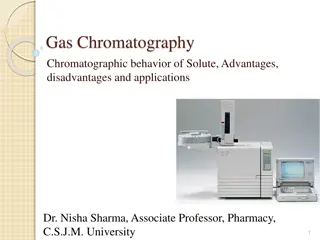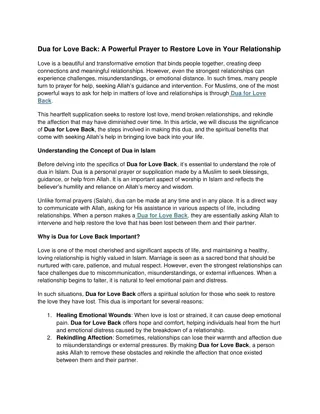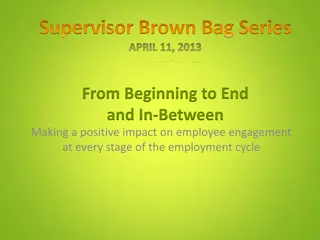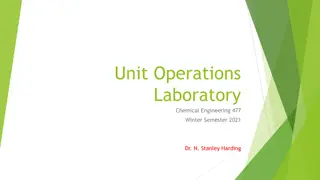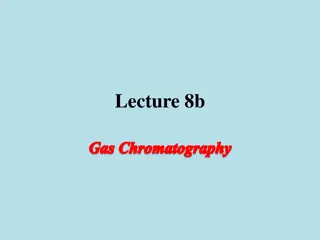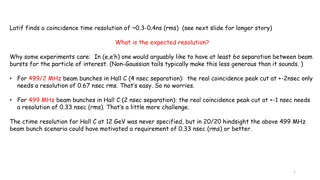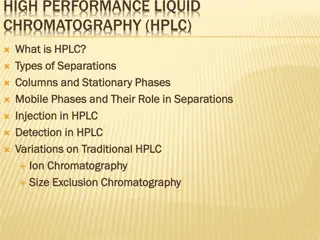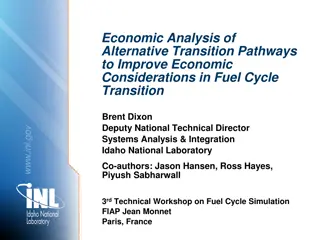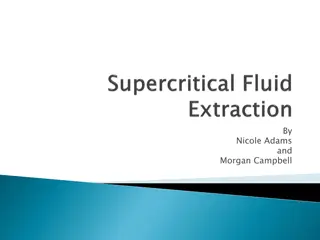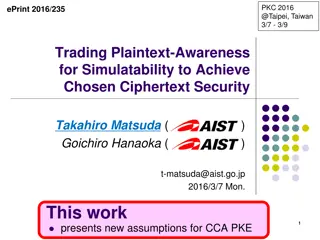Understanding Medical Separation with Reinstatement Rights (MSWR)
Explore the key elements involved in placing a student on Medical Separation with Reinstatement Rights (MSWR), including consultation with Wellness staff and recent policy changes. Delve into scenarios where MSWR might be needed and understand the process of Medical Separations in Job Corps. Gain in
2 views • 26 slides
Comprehensive Review on Medical Separations and Direct Threat Assessments for Health Staff
This resource provides an extensive overview of medical separations and direct threat assessments relevant to Job Corps health and wellness staff and subcontractors. It covers topics such as the process of medical separations, reinstatement rights, disability accommodation, and when medical separati
1 views • 60 slides
Courses and Training on Child Welfare and Family Support
The Melograno Training Courses focus on combining scientific and methodological skills with practical experience in managing a variety of services for individuals and families. Drawing from the expertise of professionals with extensive backgrounds in psychology, social work, education, and counselin
2 views • 32 slides
Young’s double slit
Explore various examples and whiteboard problems related to Young's double slit experiment, diffraction patterns, and interference of light waves. From calculating fringe distances to determining wavelengths and frequencies of light, these examples provide a comprehensive overview of optical phenome
5 views • 30 slides
Understanding Employee Maintenance and Separation
Employee maintenance involves actions like transfers and promotions, which facilitate career development and job satisfaction. Separation, on the other hand, marks the end of an employee's tenure in an organization and can be voluntary or involuntary. Voluntary separations can be avoidable or unavoi
1 views • 22 slides
Strong Average-Case Circuit Lower Bounds: A Brief Overview
Exploring the history and motivation behind the Circuit Lower Bounds Program focused on proving complexity class separations through non-trivial derandomization, with a primary emphasis on Strong Average-Case Lower Bounds. Ren and Chen delve into the pursuit to establish ?? ≠ ? since the 1980s.
0 views • 61 slides
Understanding Ion-Pair Chromatography (IPC): Theory and Applications
Ion-Pair Chromatography (IPC) involves adding ionic surfactants to a reversed-phase Chromatography system to affect retention and selectivity of ionic compounds. Developed by Dr. Gordon Schill, IPC is crucial for resolving hydrophilic samples and controlling selectivity in separations. The theory in
6 views • 18 slides
Understanding Paper and Thin Layer Chromatography (TLC) in Biochemistry
Chromatography techniques are used in laboratories to separate and identify components of mixtures. Paper chromatography is a type where a developing solution travels up a filter paper, separating compounds based on their affinity to the stationary phase. Thin Layer Chromatography (TLC) is a similar
0 views • 22 slides
Understanding Infant Attachment Through the Strange Situation Experiment
The Strange Situation experiment conducted by Mary Ainsworth et al. in 1978 aimed to describe and evaluate the attachment relationship between caregivers and infants. The study involved observing caregiver-infant interactions through separations and reunions to classify attachment types such as secu
1 views • 6 slides
Enhancing Transitional Care in Maternity and Neonatal Services at NHS Ayrshire and Arran
This project focused on reintroducing transitional care within the Maternity and Neonatal Service at NHS Ayrshire and Arran, aiming to enhance family satisfaction, reduce term admissions to the Neonatal Unit, and improve the overall care provided to families. Key strategies included changes in ward
0 views • 10 slides
Employee Layoffs, Separations, and Benefits Training Session
This training session on employee layoffs, separations, and benefits provides crucial information on employee classifications, civil service rules, seniority, layoff procedures, re-employment, and employee benefits. Topics covered include different employee classifications, civil service seniority,
0 views • 21 slides
Yom Kippur Nilah Service Highlights
Explore the meaningful moments of the Yom Kippur Nilah service, from the blessings over wine and spices to the powerful separations and prayers for blessings to come. Witness the traditions and prayers honoring Eliyahu Hanavi, Miryam Hanviah, and the hope for a better future. Tizku l'shanim rabot!
0 views • 7 slides
Black-Box Separations in Quantum Commitment Protocols
Protocol analysis of non-interactive commitments in classical and quantum settings, including discussions on OWF, NIC, PRS, and quantum communication implications. The results based on the Polynomial Compatibility Conjecture showcase advancements in post-quantum OWF and NIC scenarios.
0 views • 14 slides
Gas Chromatography: Behavior of Solute, Advantages, Disadvantages, and Applications
Gas chromatography involves the chromatographic behavior of solutes in various ways such as retention volume, retention time, and partition coefficient. It offers advantages like good separation, short analysis time, and universal detectors for organic compounds. However, there are disadvantages suc
0 views • 15 slides
Dua For Love Back
Love is a powerful and deeply emotional connection that binds two individuals together. However, relationships can face various challenges, leading to breakups or separations. When a romantic relationship ends, especially with someone deeply cherishe
1 views • 4 slides
Enhancing Employee Engagement and Managing Separations Effectively
Understanding employee engagement levels is crucial for organizational success. Engaged employees drive innovation and productivity, while actively disengaged employees can undermine the efforts of their colleagues. Effective management of separations, whether voluntary or involuntary, is also essen
0 views • 15 slides
Unit Operations Laboratory Chemical Engineering Winter Semester 2021
Dr. N. Stanley Harding, a seasoned Chemical Engineering professional, introduces the Chem. Eng. 477 Unit Operations II course focusing on transferring theoretical knowledge to practical experience. The laboratory experiments cover various engineering principles such as separations, continuous distil
0 views • 13 slides
Understanding Gas Chromatography: Basics, Theory, and Applications
Gas chromatography is a powerful analytical technique widely used in research, industrial quality control, forensics, and environmental analysis. This method separates compounds in a mixture based on polarity, boiling point, and interactions with the stationary phase. The setup includes components l
0 views • 10 slides
Optimizing Time Resolution in Coincidence Experiments
Latif seeks to improve coincidence time resolution in experiments by analyzing the necessary beam burst separations and achieving a resolution of 0.173 ns in the best-case scenario. Detailed formulae and calculations help in understanding the expectations and requirements for achieving desired resol
0 views • 9 slides
Understanding High Performance Liquid Chromatography (HPLC)
High Performance Liquid Chromatography (HPLC) is a powerful analytical technique used for separating compounds in a liquid mixture based on their interactions with the stationary phase and mobile phase. It involves different types of separations, columns, mobile phases, and detection methods. Isocra
0 views • 20 slides
Economic Analysis of Alternative Transition Pathways in Fuel Cycle
This study explores economic considerations in fuel cycle transition by analyzing alternative pathways to improve efficiency and reduce costs. Strategic buildout and leveraging of low-enriched uranium for fast reactors are key strategies to enhance the economics of transition pathways. The research
0 views • 33 slides
Supercritical Fluid Chromatography: History, Principles, and Applications
Supercritical Fluid Chromatography (SFC) has a rich history dating back to the 1960s, utilizing supercritical CO2 as a mobile phase for chromatographic separations. SFC offers advantages such as high efficiency, chiral separations, and green chemistry applications. Despite being overshadowed by HPLC
0 views • 27 slides
New Assumptions for Achieving Chosen Ciphertext Security in Cryptography
This research work focuses on presenting new assumptions for achieving chosen ciphertext security in public key encryption. The study aims to clarify the necessary and sufficient assumptions to realize general cryptographic primitives, particularly focusing on CCA secure PKE and KEM. The ultimate go
0 views • 27 slides


